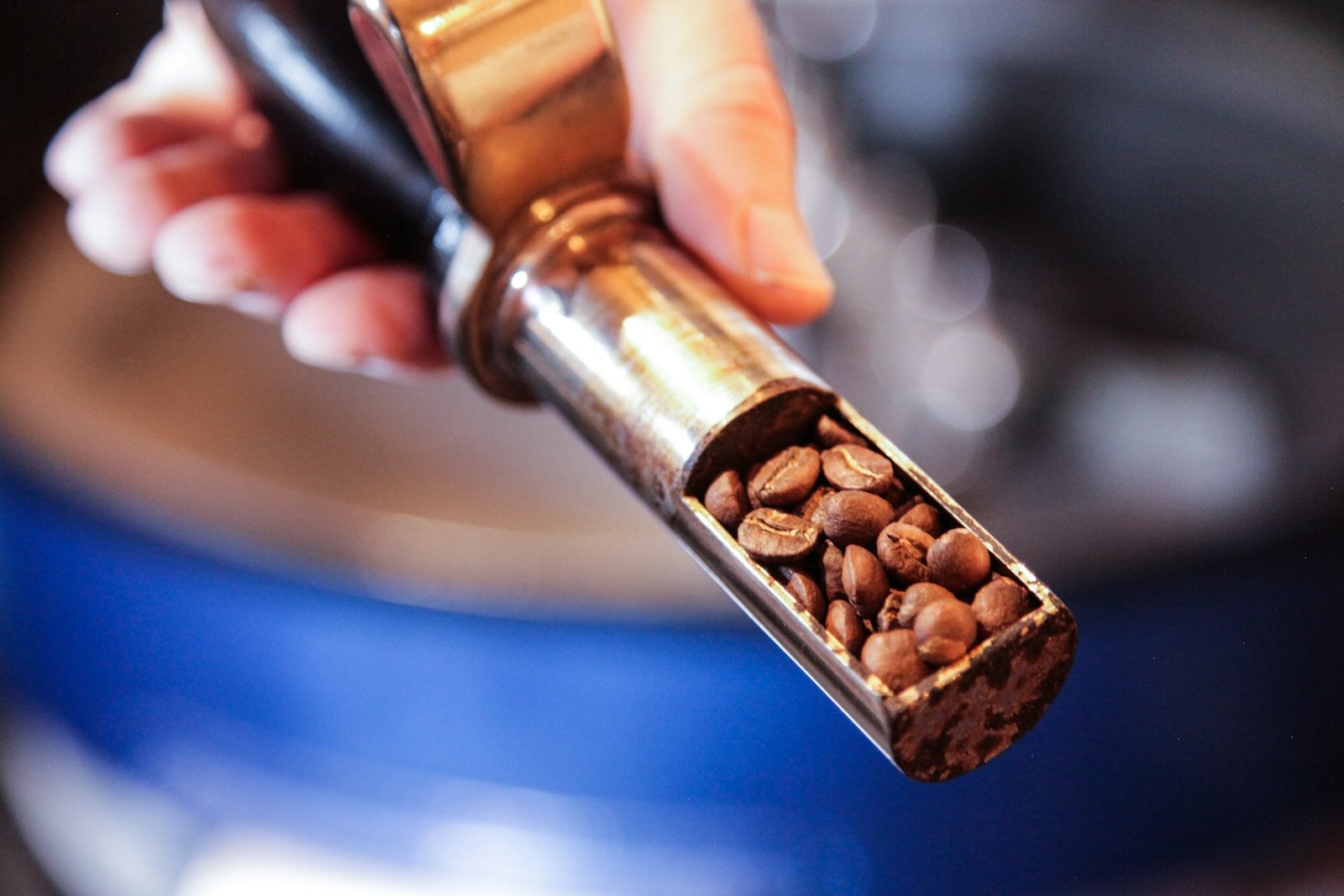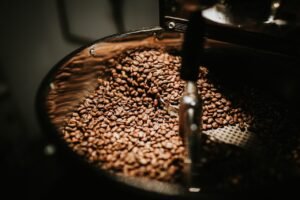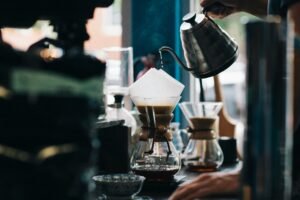Coffee enthusiasts often find themselves in the light versus dark roast debate, each side passionate about their preference. But what makes these roasts different, and how can you achieve your ideal coffee profile at home? Let’s dive into the world of coffee roasting to help you master your morning brew.
Understanding Coffee Roasts: The Fundamentals
Coffee beans begin their journey as the green seeds of coffee cherries. The roasting process transforms these raw beans into the aromatic coffee we love. The key difference between light and dark roasts isn’t just flavor—it’s chemistry.
Light Roast Characteristics
Light roasts are heated to lower temperatures (approximately 350-400°F) and removed from heat shortly after the “first crack” occurs. These roasts retain more of the bean’s original characteristics:
- Higher acidity and brightness
- More complex flavor notes (fruity, floral, citrus)
- Higher caffeine content (contrary to popular belief)
- Thinner body and mouthfeel
- Lighter brown color with no oil on the surface
Popular light roast names include Cinnamon, Half City, and Light City.
Dark Roast Characteristics
Dark roasts reach higher temperatures (430-450°F) and are heated through the “second crack.” This extended roasting creates:
- Lower acidity
- Bold, robust flavors (chocolate, caramel, nuts)
- Slightly less caffeine
- Fuller body and mouthfeel
- Dark brown to almost black color with oily surface
Common dark roast names include French, Italian, Espresso, and Vienna.
Nutritional Differences Between Light and Dark Roasts
While coffee isn’t primarily consumed for nutritional benefits, there are subtle differences between light and dark roasts:
Light Roast Nutrition
- Higher chlorogenic acid content (an antioxidant)
- More preserved natural compounds
- Slightly higher caffeine content per bean (though brewing method has a greater impact)
Dark Roast Nutrition
- Higher levels of N-methylpyridinium (may help prevent acid production in the stomach)
- Lower chlorogenic acid content
- Slightly more effective at releasing fat-burning compounds during digestion
Remember that nutritional differences are minimal—your brewing method and additives (milk, sugar, etc.) will have a more significant impact on your cup’s nutritional profile.
Brewing Equipment: Essential Tools for Home Roasting
Before diving into specific techniques, let’s identify the equipment you’ll need to achieve your preferred roast profile at home.
Affiliate Product Links for Home Coffee Roasting
- Home Coffee Roasters
- Green Coffee Beans
- Roasting Accessories
- Coffee Grinding Equipment
- Brewing Equipment
DIY Roasting: Creating Light Roasts at Home
Creating light roasts at home requires precision and attention to timing. Here’s how to achieve that bright, complex cup:
Home Oven Method
- Preheat your oven to 350°F
- Spread green beans evenly on a perforated baking sheet
- Roast for 10-15 minutes, listening carefully for the first crack
- Remove beans shortly after the first crack begins (usually around 12 minutes)
- Cool immediately by transferring to a metal colander and stirring
Stovetop Method
- Heat a heavy-bottomed pan or wok over medium heat
- Add a single layer of green beans, stirring constantly
- After 5-7 minutes, listen for the first crack
- Continue stirring for 30-60 seconds after first crack begins
- Transfer to a metal colander to cool quickly
The key to perfect light roasts is immediate cooling—residual heat continues the roasting process, so rapid cooling is essential to preserve those bright, acidic notes.
Mastering Dark Roasts at Home
Dark roasts require higher temperatures and longer roasting times. Here’s how to achieve that rich, bold profile:
Home Oven Method
- Preheat your oven to 425°F
- Spread green beans on a perforated baking sheet
- Roast for 15-20 minutes, listening for both first and second crack
- Continue roasting 1-3 minutes after second crack begins
- Cool immediately in a metal colander
Stovetop Method
- Heat a heavy-bottomed pan over medium-high heat
- Add green beans in a single layer, stirring constantly
- Continue roasting through first crack (around 7-9 minutes)
- Listen for second crack (usually 3-5 minutes after first)
- Remove from heat 30-90 seconds after second crack begins
- Cool immediately
Dark roasts develop oils on the surface—this is normal and indicates you’ve achieved the proper roast level. Be aware that dark roasts create more smoke, so ensure good ventilation.
Brewing Techniques to Highlight Your Preferred Roast
Once you’ve mastered roasting, brewing methods can further enhance your chosen profile:
For Light Roasts
- Pour-over methods (V60, Chemex) highlight acidity and complex notes
- Use water at 195-205°F (slightly cooler than for dark roasts)
- Finer grinds extract more flavor complexity
- Ratio of 1:16 (coffee to water) as a starting point
For Dark Roasts
- French press or espresso methods complement boldness
- Water at 200-205°F works well
- Slightly coarser grinds prevent over-extraction
- Ratio of 1:15 (coffee to water) as a starting point
Troubleshooting Common Roasting Issues
Light Roast Problems
- Grassy flavor: Underdeveloped, increase roast time
- Excessive sourness: Increase roast time slightly or adjust brewing temperature
- Uneven coloration: Stir more frequently during roasting
Dark Roast Problems
- Burnt taste: Decreased roast time or temperature
- Thin body: Increase roast level slightly or adjust brewing method
- Excessive bitterness: Reduce roast time or cool more rapidly
Storage Tips for Freshly Roasted Coffee
Proper storage preserves the unique characteristics of your home-roasted beans:
- Allow freshly roasted beans to de-gas for 12-24 hours before sealing
- Store in airtight containers away from light, heat, and moisture
- Light roasts maintain peak flavor for 1-2 weeks
- Dark roasts peak at 3-5 days and maintain quality for approximately 2 weeks
Finding Your Perfect Roast Level
The beauty of home roasting is experimentation. Many coffee lovers enjoy a medium roast that balances acidity and body. Keep a roasting journal noting times, temperatures, and tasting notes to refine your perfect cup.
Remember that different bean origins react differently to roasting. Ethiopian beans often shine as light roasts, highlighting their natural fruity notes, while Indonesian beans frequently excel as darker roasts, emphasizing their earthy, chocolatey characteristics.
Whether you prefer the bright complexity of light roasts or the bold richness of dark, home roasting allows you to craft coffee tailored precisely to your palate—a luxury no store-bought coffee can match.
This post may contain affiliate links. If you make a purchase through these links, I may earn a small commission at no extra cost to you.




